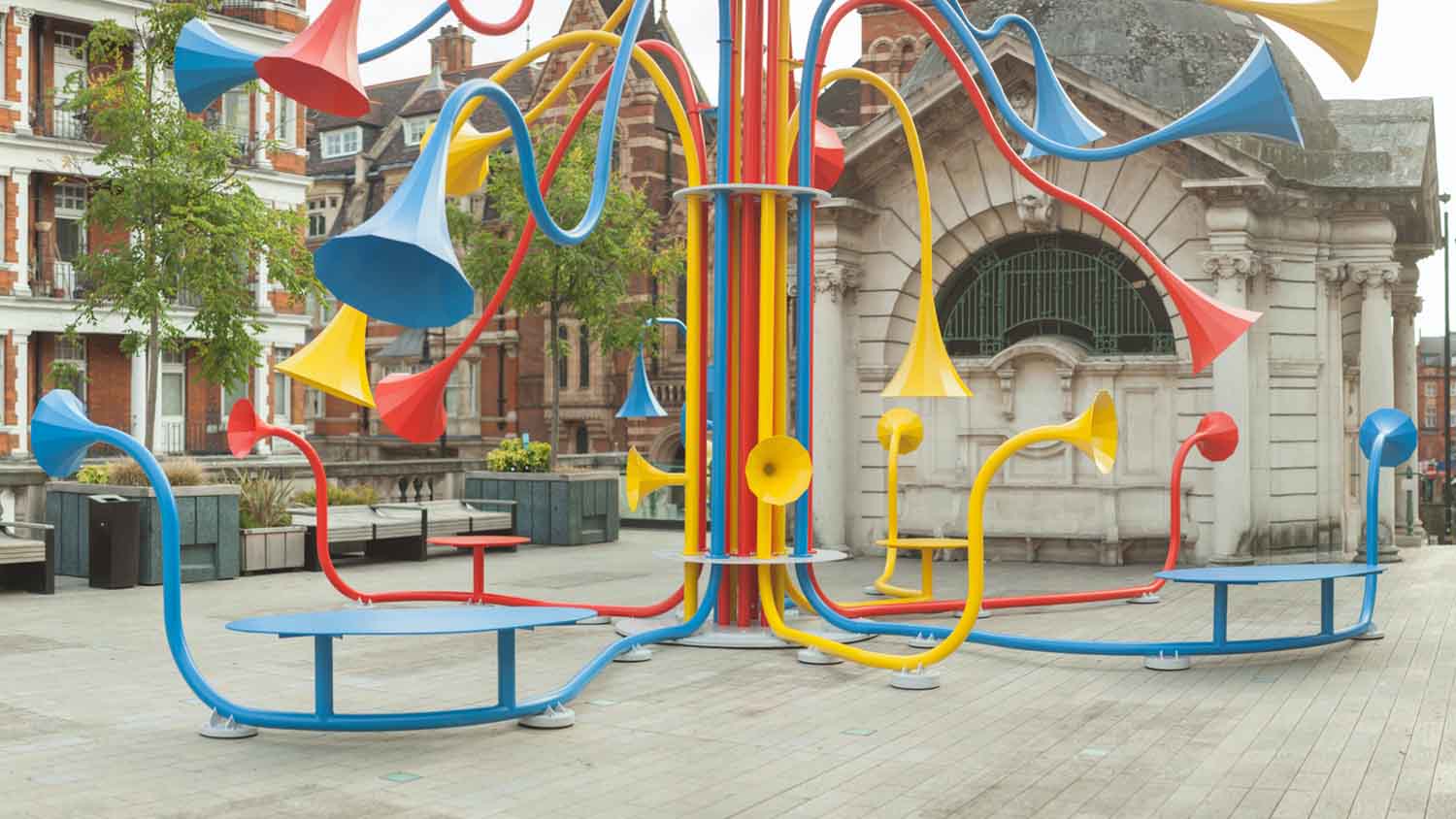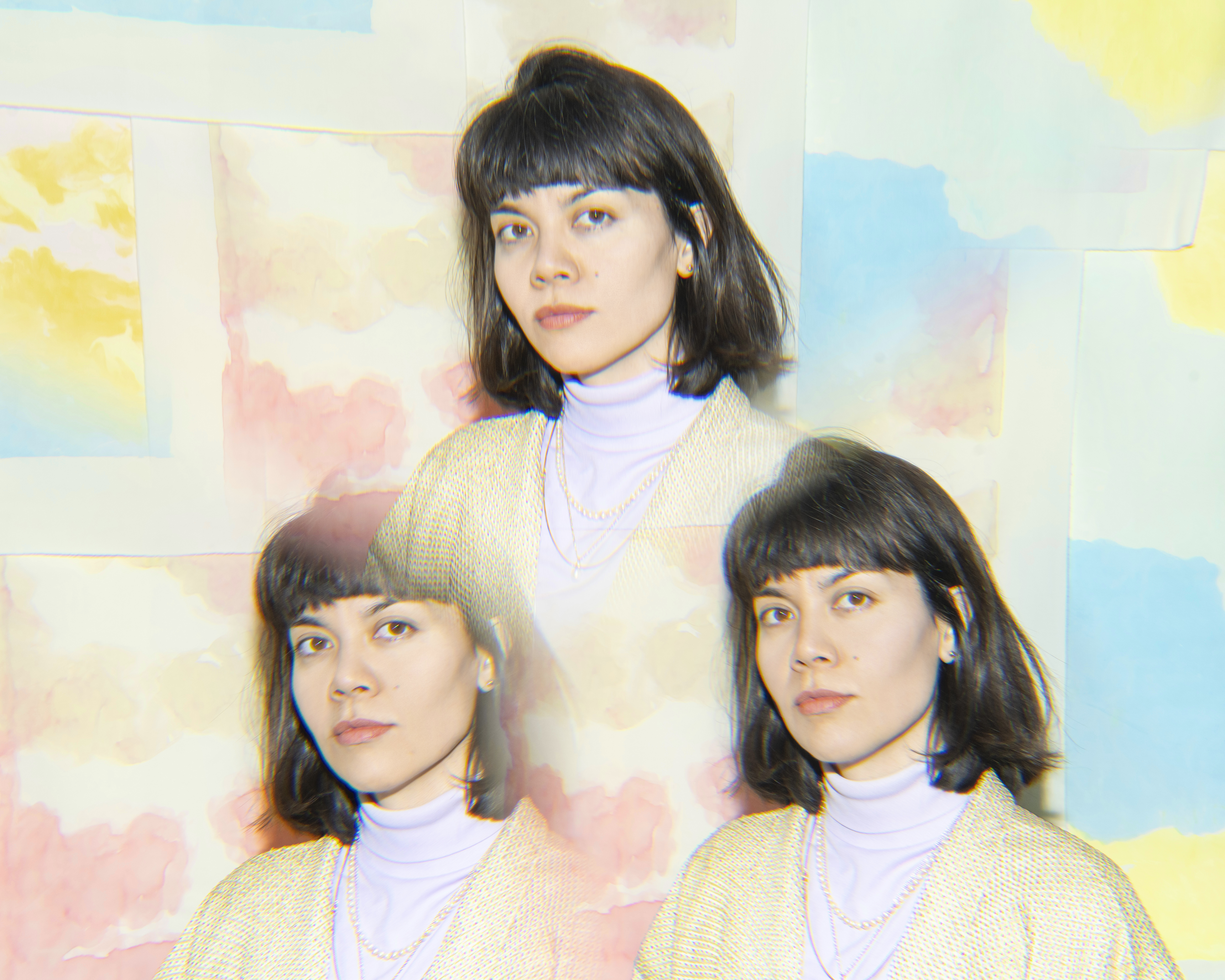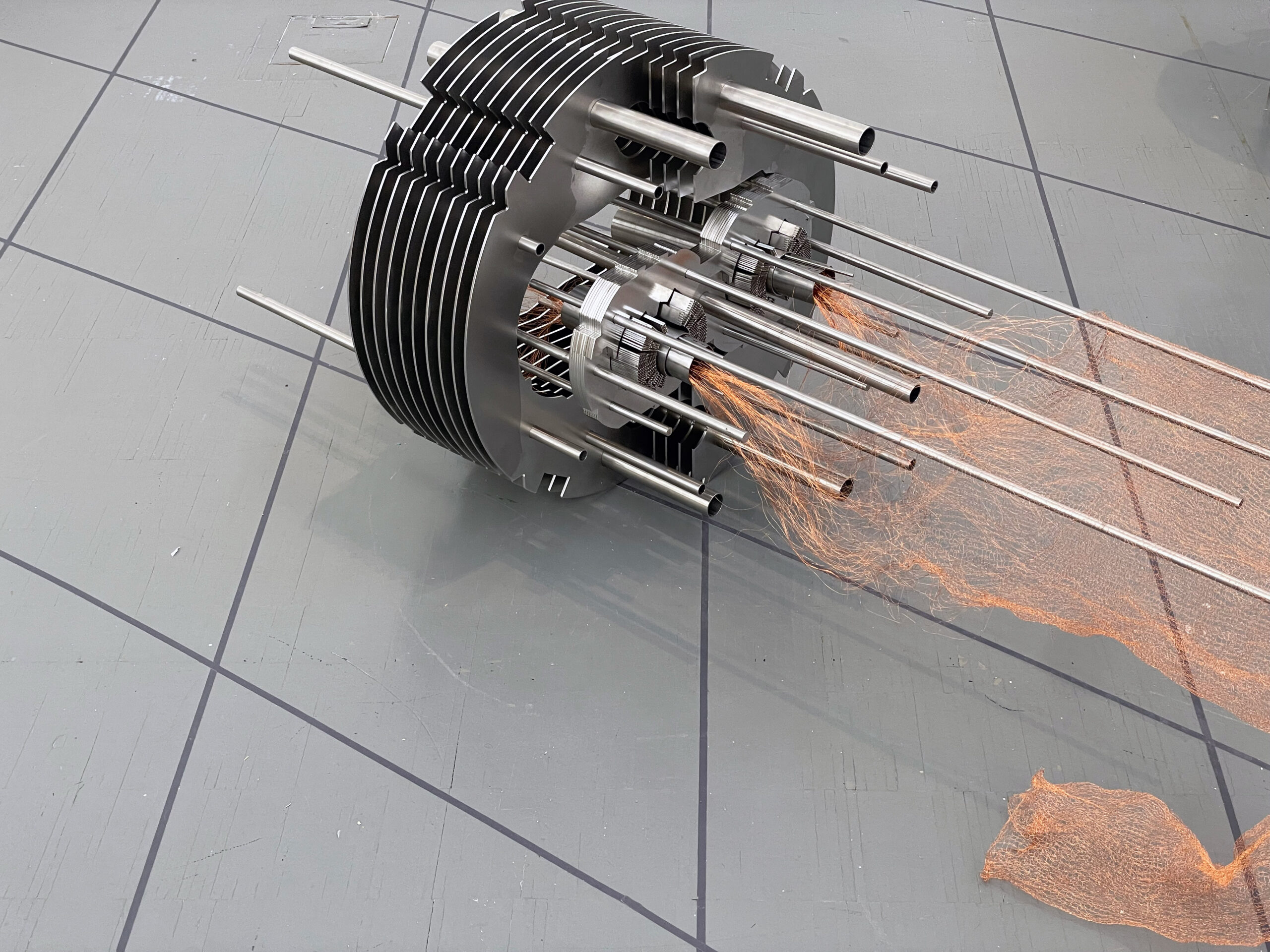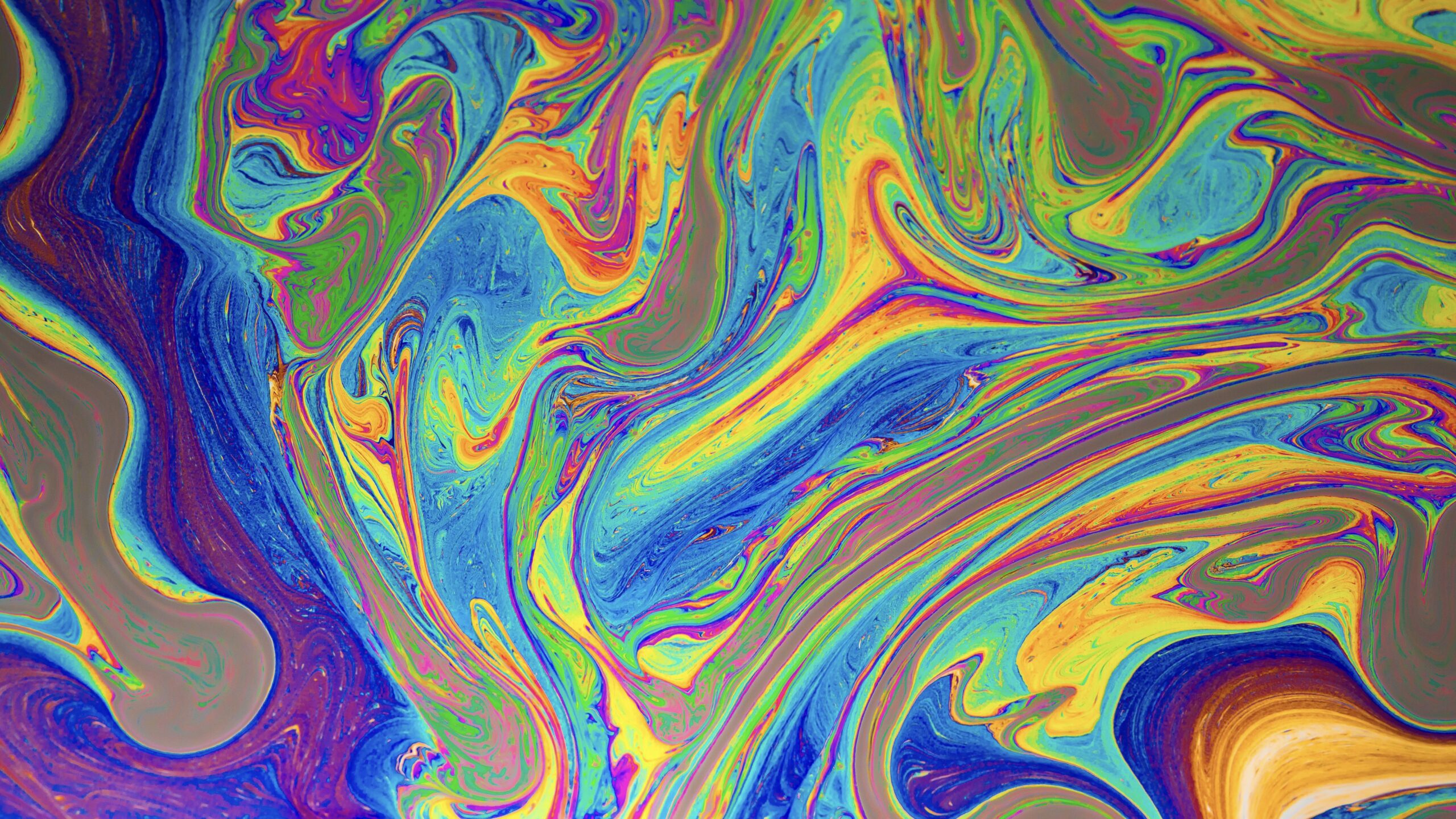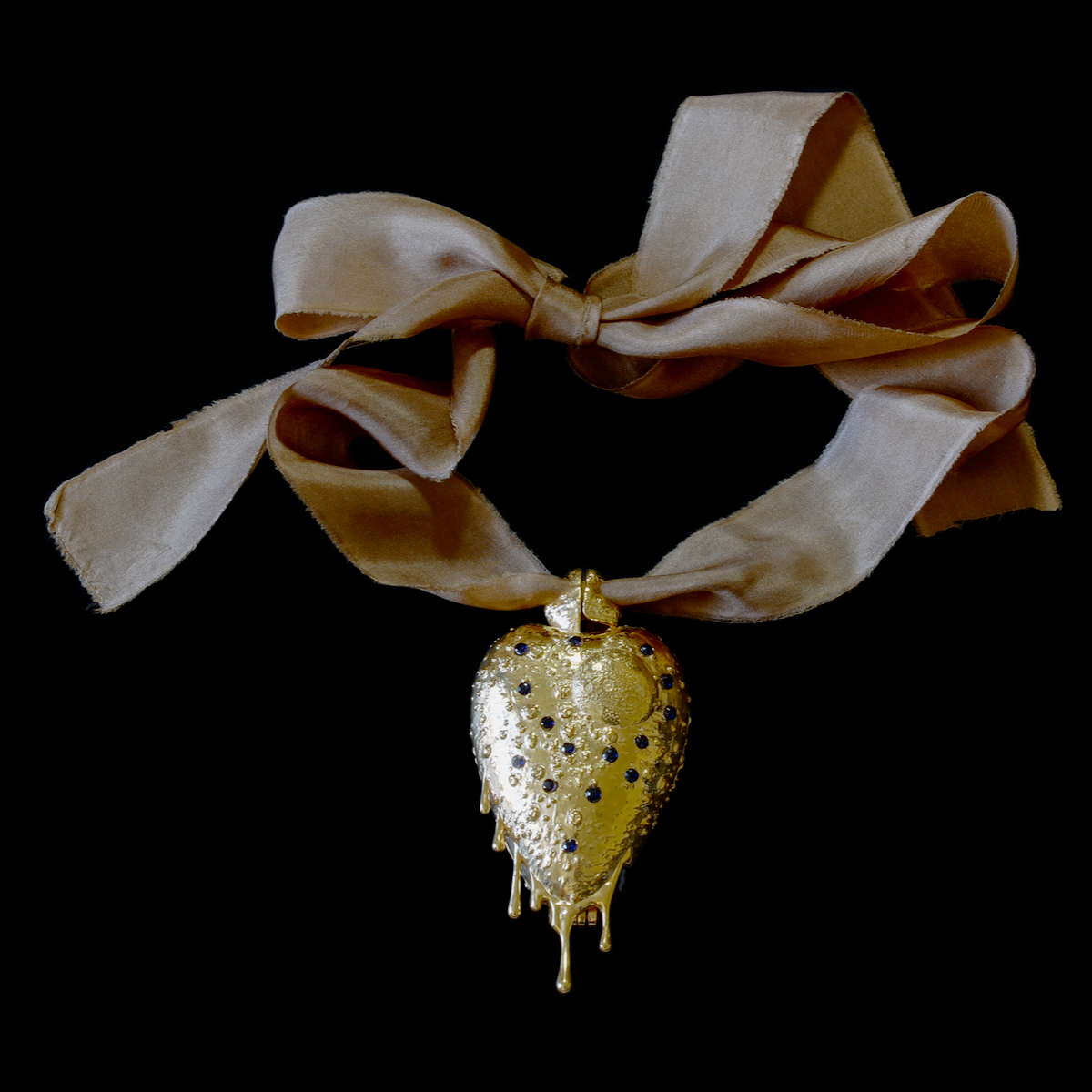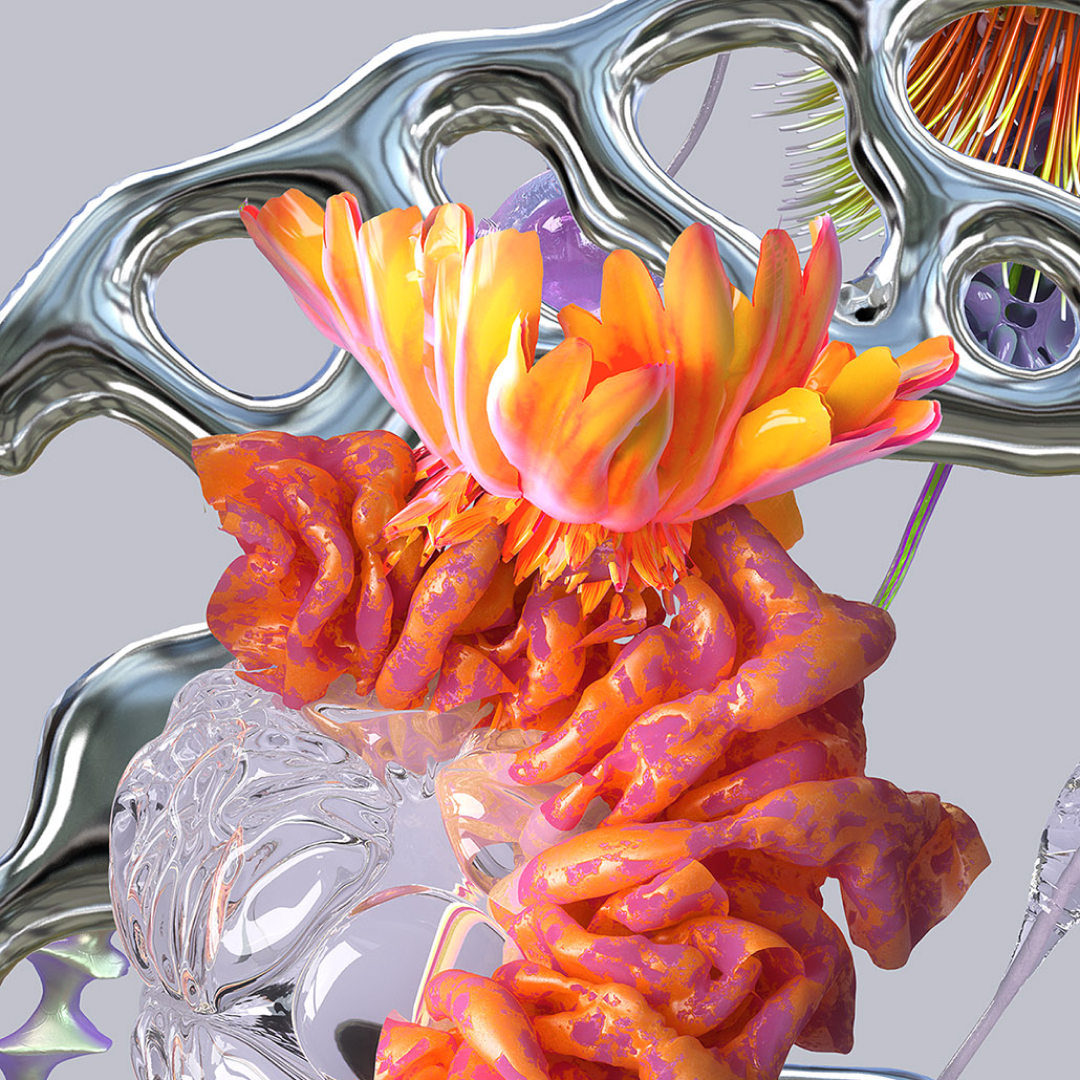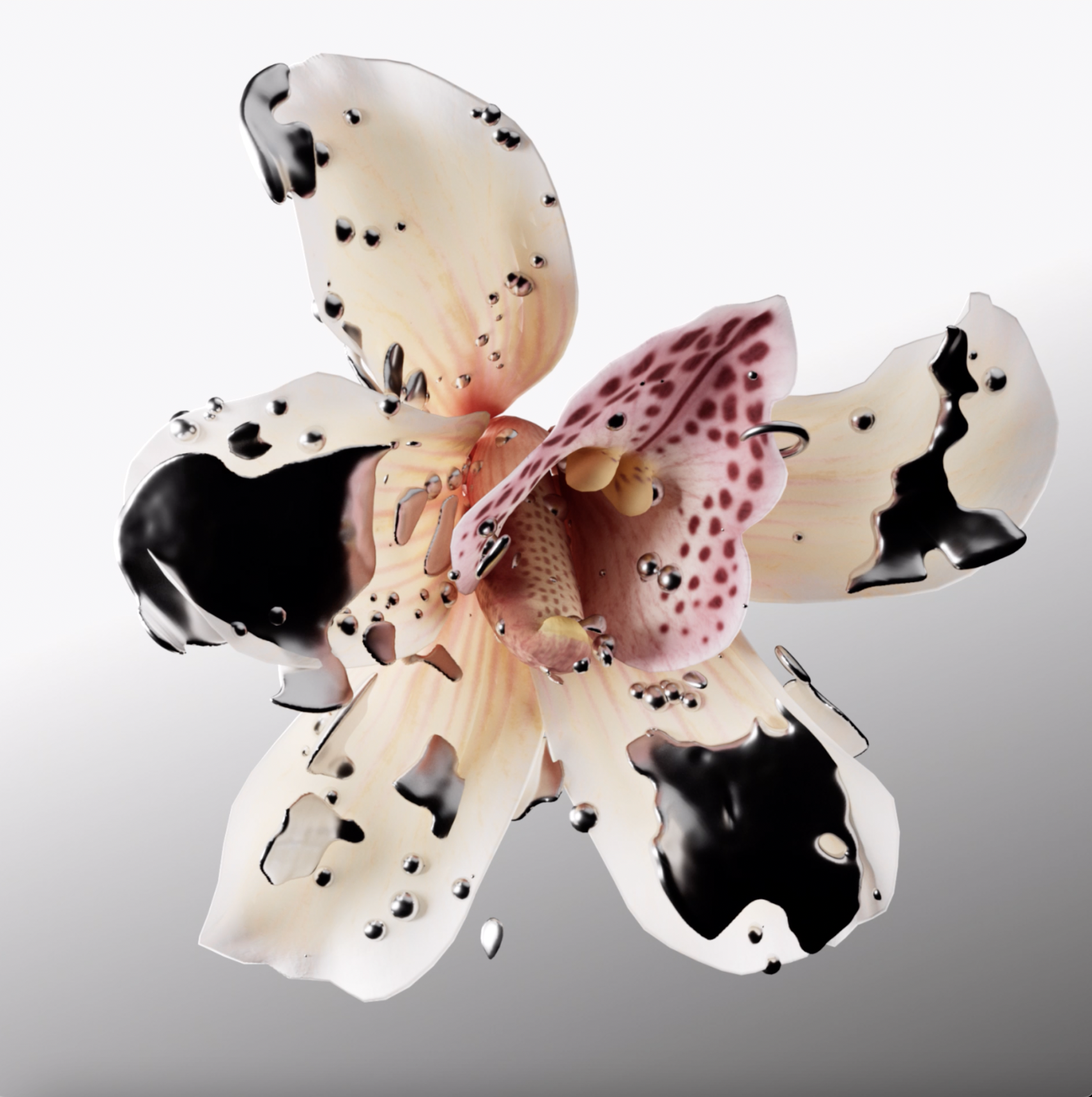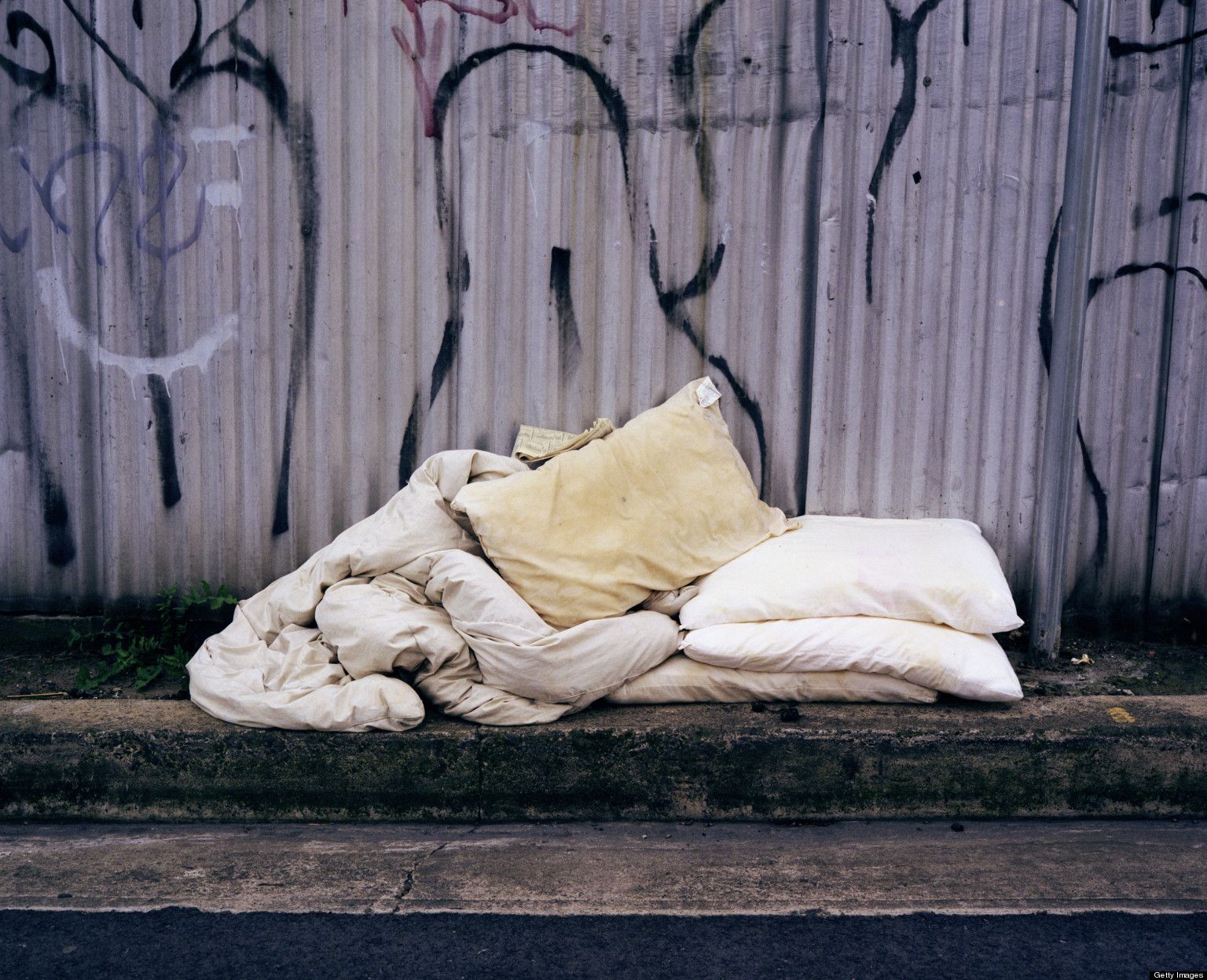
A dialogue on art, philosophy and self irony
Feb. 6, 2023
How to turn everything into sound design: the projects of Yuri Suzuki
When music is a visual language

© Yuri Suzuki, Sharevari
What would you say if I told you that you can take anything and turn it into your favorite thing? Like Midas into gold, Jesus into wine (well, not everything and probably that wasn't his favorite thing), or Sub-Zero into ice sculpture. This kind of magic seems to be unaffordable and even non-existent, but that’s what Japanese artist and designer, Yuri Suzuki, has been doing for many years. He magically turns everything into sound. He does it with kitchen furniture, with world maps, with playgrounds, with your face.
Text
by Boris Starodubtsev
Suzuki was born in Tokyo in 1980, and studied industrial design there. During that period of his life, Suzuki revealed his interest in the combination of music and technology. In 2002, he moved to Berlin intending to be a DJ, but it did not work out. Suzuki just didn’t feel himself as part of that vibe.
When he started to take his first steps as a musician, he discovered he had dyslexia. This condition differs slightly from case to case. It doesn't affect overall intelligence; however, a person with dyslexia usually finds it hard to read information, remember it and learn through reading. In Suzuki’s case, that meant that he couldn’t read scores.
There were few effective ways to learn how to play instruments without reading music back then. In 2005, he moved to London to continue his education. He began to study at the Royal College of Art, a place, where there were and, I guess still are, a lot of ways to experiment with all the knowledge you get. For Suzuki, it was a time when he learned, among other things, how to connect analog and digital, how to connect design and sound, how to navigate between artistic and commercial projects and also how to include people in his projects.
His career began. A shot, another shot, then almost going bankrupt, then a new project again. He seemed to be pursuing something, looking for a perfect environment for his projects.
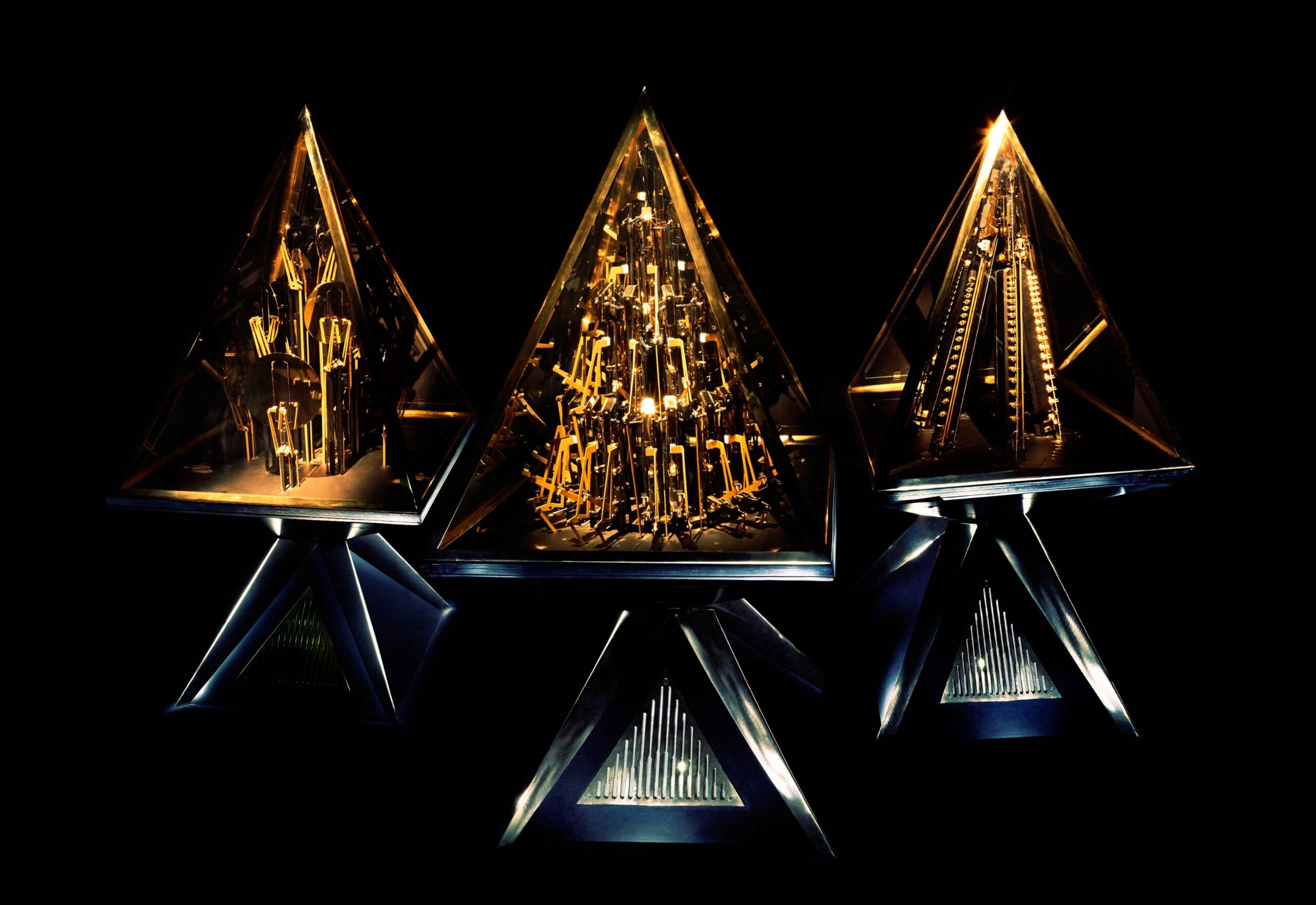
© Yuri Suzuki, The Pyramidi
His efforts have finally paid off. In 2018, he became a partner in the London office of Pentagram — a large company with a solid history and offices in three countries. He collaborated with many famous companies like Google and Redbull, with some musicians like will.i.am, the guy from the Black Eyed Peas (remember him?) as well as OK Go (a band whose songs you won’t remember but you probably did see and enjoy their music videos). In 2019, he had his own exhibition at the Design Museum in London where he was probably the first sound designer in history to ever have an exhibition at the Museum, according to his interview with Dezeen.
Maybe it’s too short for a story of someone’s life, especially for someone so significant, but the work of the master in most cases tells us more about them as well as about the world around them.
Projects
Whatever Suzuki does, whether it’s a sculpture, an installation, a site, a piece of music, a device, the sound is always the core of his practice. The most amusing feature of his works is actually the simplicity of conception - not of the implementation, but of conception as it is. You want to know how the planet sounds? He can totally do it. Do you want to hear the sound of mundane objects or somehow transmit sound through touch? Yuri Suzuki is at your service. Maybe you want to make beats from the sounds that people upload to the Internet or to make music with your face? You now know whom to ask.
I think most of Suzuki’s projects deserve mentioning, but let’s travel through those I found most interesting.
OTOTO
This is the oldest one from his website. It is a mini-synth/sampler with crocodile clips, which you can adjust to any objects — and even put into the water. After you adjust the clips, you can touch them and hear through the speaker in the kit the sound that they make. The idea behind this project was to make it easier for people who have no idea about music programming, but are still eager to create sounds anyway.
Colour Chaser
For this project, Suzuki created miniature robots with speakers, which follow the line on the paper and make sounds according to the color painted by some crayons. Different traces, different colors — different sounds. Suzuki created this pursuing a desire to create a new kind of notation, which would allow anyone to draw music. It is a sort of art-therapy, which includes both painting and making music at the same time.
Sound Taxi
How would you handle the noise in a crowded city? Would you turn up the volume of the music in your headphones? Yuri Suzuki has another answer. He put some huge speakers onto a London Taxi and… well, you might imagine that he turned on something like ‘Elevation’ by U2 and sent this car around town, but that wouldn’t be so much of a creative task for him.
Suzuki updated a car so that it could record city noise and transform it into music. ’So much sound in our surroundings is not well designed, like in public transport for instance’, he said in an interview for Dezeen.
© Yuri Suzuki, The Pyramidi
Ishin-Den-Shin
Can you imagine using your eyes to touch? Yuri Suzuki can imagine using touch to transmit sound! In 2013, he made a special microphone that records sound, which becomes inaudible right afterwards. Then, if you touch a person’s ear, they can hear it. It has a lot to do with physicality and intimacy. Little did Yuri Suzuki know that a couple of years later, in a volatile pandemic time, his works would focus more on the subject of the disappearing physicality.
AR Music Kit
One more magic trick from Yuri, and something that is actually really hard to imagine. He developed an Android application that allows you to turn some sticky notes into music. An App catches a note with a name of a note or a chord through the camera, and that lets you play on anything and listen to the result through a phone speaker or headphones.
There is currently no such app in Android — well, at least I couldn’t find it, but I hope Suzuki has some updates.
The Global Synthesizer
This one would definitely attract Jonny Greenwood from Radiohead, and who knows, it probably did because it is a huge analog modular synthesizer, and Jonny adores them. Suzuki and his team recorded and mixed sounds from around the world, put them into modules that change sounds while being connected and then reconnected with wires as well as when people manipulated the knobs. The most spectacular thing here is that Suzuki built the modules in the shape of the world map, and the sounds are taken in the countries those modules represent.
Suzuki made it for Moog, one of the most prominent synthesizer developers, as an installation so anyone could be Jonny Greenwood for a little while.
Face The Music
That’s just a pretty funny thing. You go to Face The Music and there you can play two different genres — opera, dubstep, blues and sci-fi — by looking at the camera of your laptop, opening your mouth, tilting your head and raising your eyebrows. Sounds fun, but why would you need this? Well, sometimes fun and bizarre are enough to experience something new.
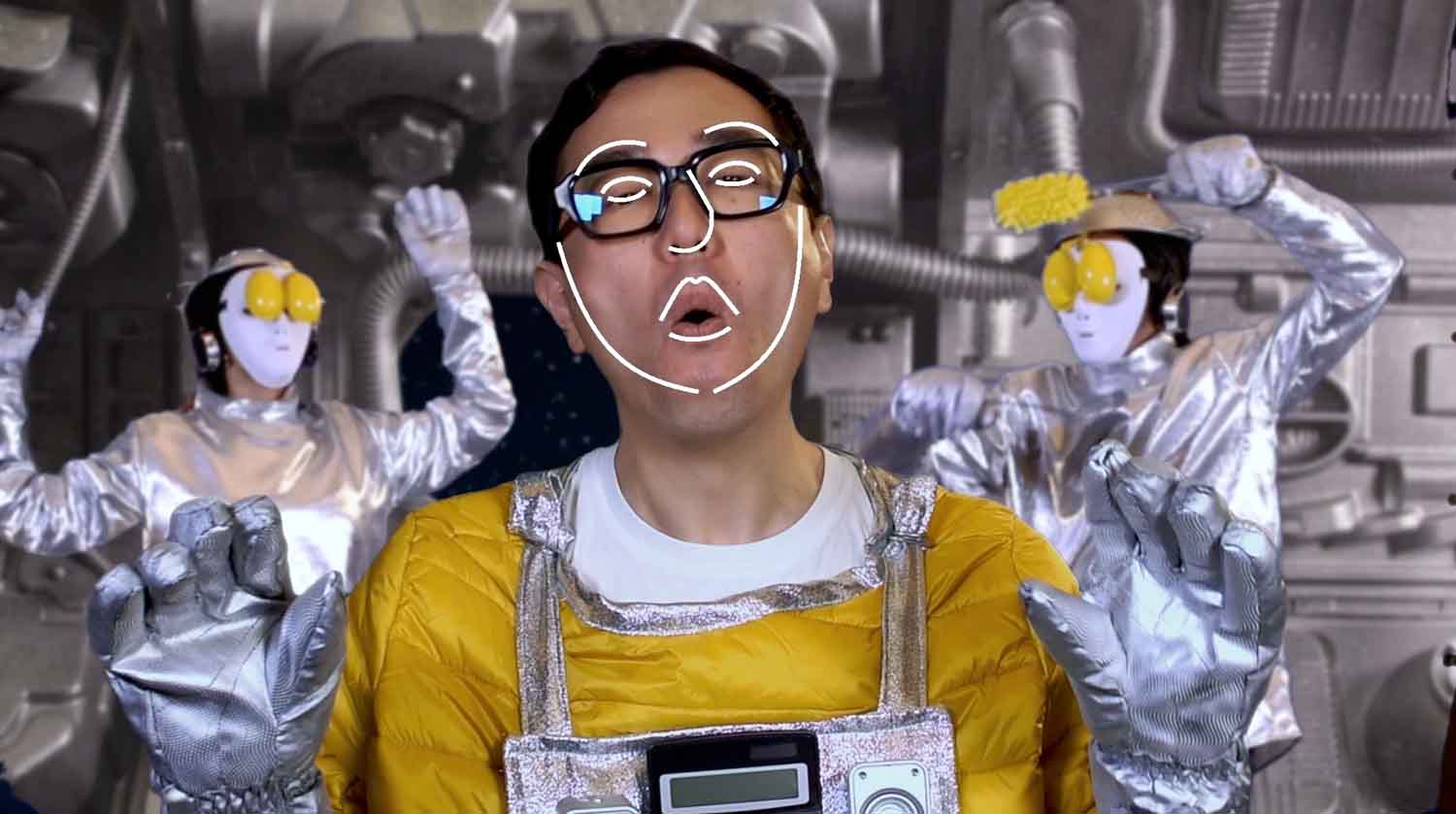
© Yuri Suzuki, Face the Music
Crowd Cloud
Sound Installations give the best representation of Suzuki’s work because of their multi-sensory impact and their physicality. As he told us, that was his fascination since he was a child.
‘I’m interested in both physical kinetic art and sound and music, therefore for me, it’s natural to merge these two’, he said.
He’s done plenty of installations during his career, and many of them include horns and speakers. This one is installed in Haneda Airport in Tokyo. He made it in collaboration with Miyu Hosoi, a Japanese composer.
The core of the installation are the sounds of the Japanese language that Suzuki and Hosoi separated from the words and turned into beautiful ambient music, a different sound from each horn aiming to comfort people, especially the foreign visitors. Brian Eno would definitely appreciate this kind of music for airports (because he is famous for his ambient music, and one of his most influential albums is called ‘Music for Airports’).
Global Sequencer
It’s almost five o’clock in the morning. The city is asleep, but I don’t sleep. I’ve been slicing one mix after another on the Global Sequencer Site for about two hours. That is entertaining, that’s mesmerizing, that’s simple. You just pick the areas on the global map and hear sounds from these areas. You can turn it on, you can turn it off. You can add more, you can reload and hear something completely different. You can change BPM, you can drastically change sound by pushing one button and you can also record and share your mix. You have fun. You can hear sounds from around the world. You feel like the whole world is open for you at this moment. This one is my favorite Suzuki work.
The Japanese City of Hamamatsu partnered with Suzuki to make this sequencer that lets you turn the sounds from dozens of countries into different types of beats. The goal was to push the boundaries of design. For example, I accidentally made some sort of Cardi B beat and immediately rapped along with it using some lines from Cardi’s ‘Bodak Yellow’.
Sonic Bloom
One of Suzuki's latest works is aimed at returning life into physical public space after the pandemic, which took much of the physical presence from us and sort of alienated us from actual interaction.
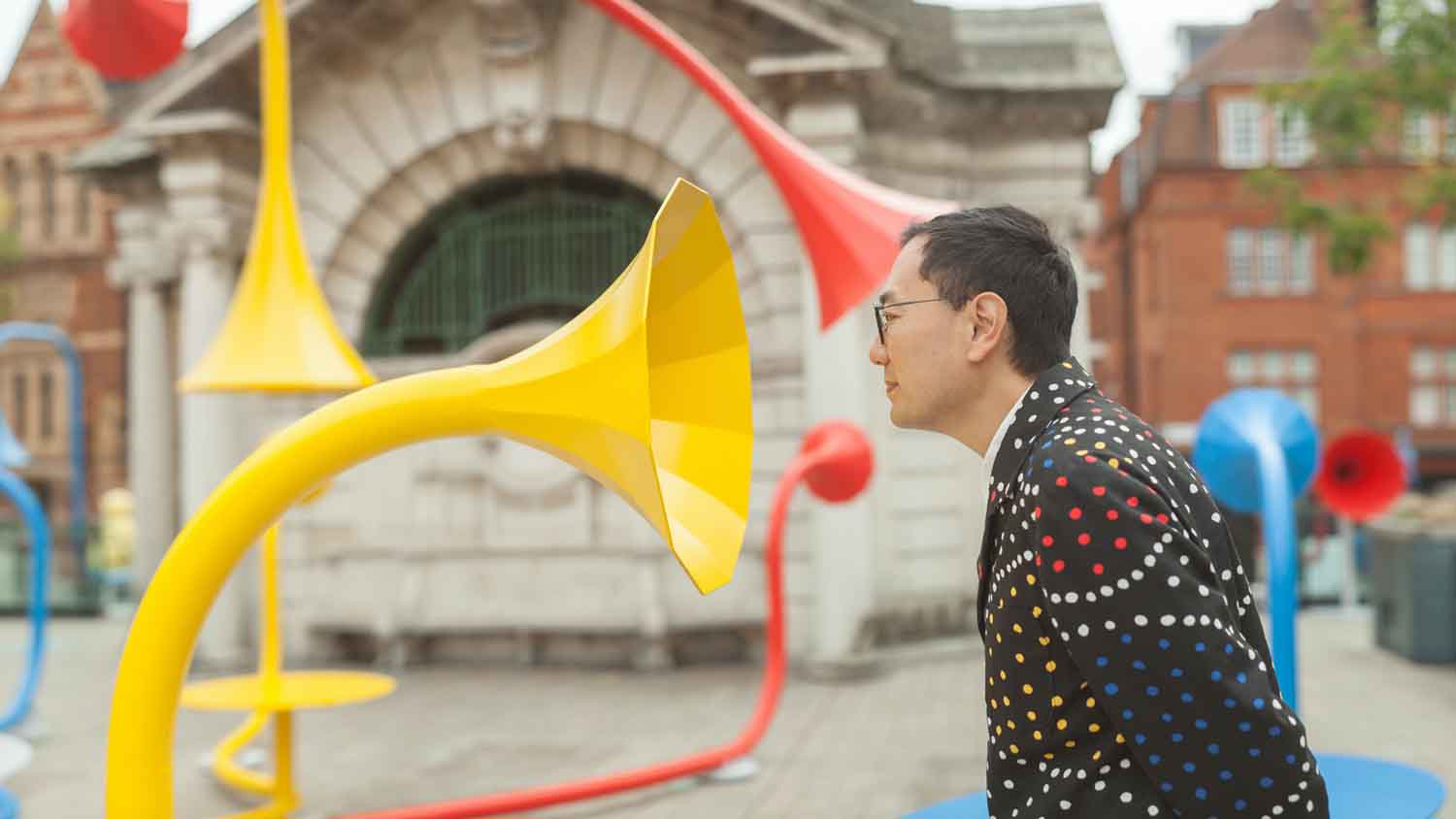
© Yuri Suzuki, Sonic Bloom
It consists of multi-coloured pipes which transmit the sound from one end of pipe to another. It catches the voices of people and also the sounds of the environment. Also, some of them are long enough to attract people from the street to go up to the garden where this installation is set, and share their experience.
There is also an application for Londoners to share their sounds on a special map.
Sound of the Earth
This one is actually the longest running, if we consider the different parts of this project as parts of the same. It was first opened in 2005. The most recent chapter is about creating the collective soundscape through the machine learning engines that are used more and more frequently by artists and designers to create the unimaginable. This one includes the sounds recorded by people from different parts of the globe. You can upload your own sounds on the site dedicated to the project.
I was stupid enough to ask Yuri about the difference between the Global Sequencer and the Sound of Earth online projects, and he quickly explained that there is a huge difference between making music, which you actually do in the first case, and browsing sounds from different parts of the world like you do in the second. Understood.
I recorded my own sound too! I sang some melody, and then heard how it was amazingly processed and fit into the mix perfectly. The machine learned!
The project also has a physical representation — a huge black sphere with tons of speakers was presented at Milano Triennale from July 15 to December 11, 2022. I was curious to know how much it costs to install such a technologically elaborate sculpture, but Suzuki labeled my question as inappropriate.
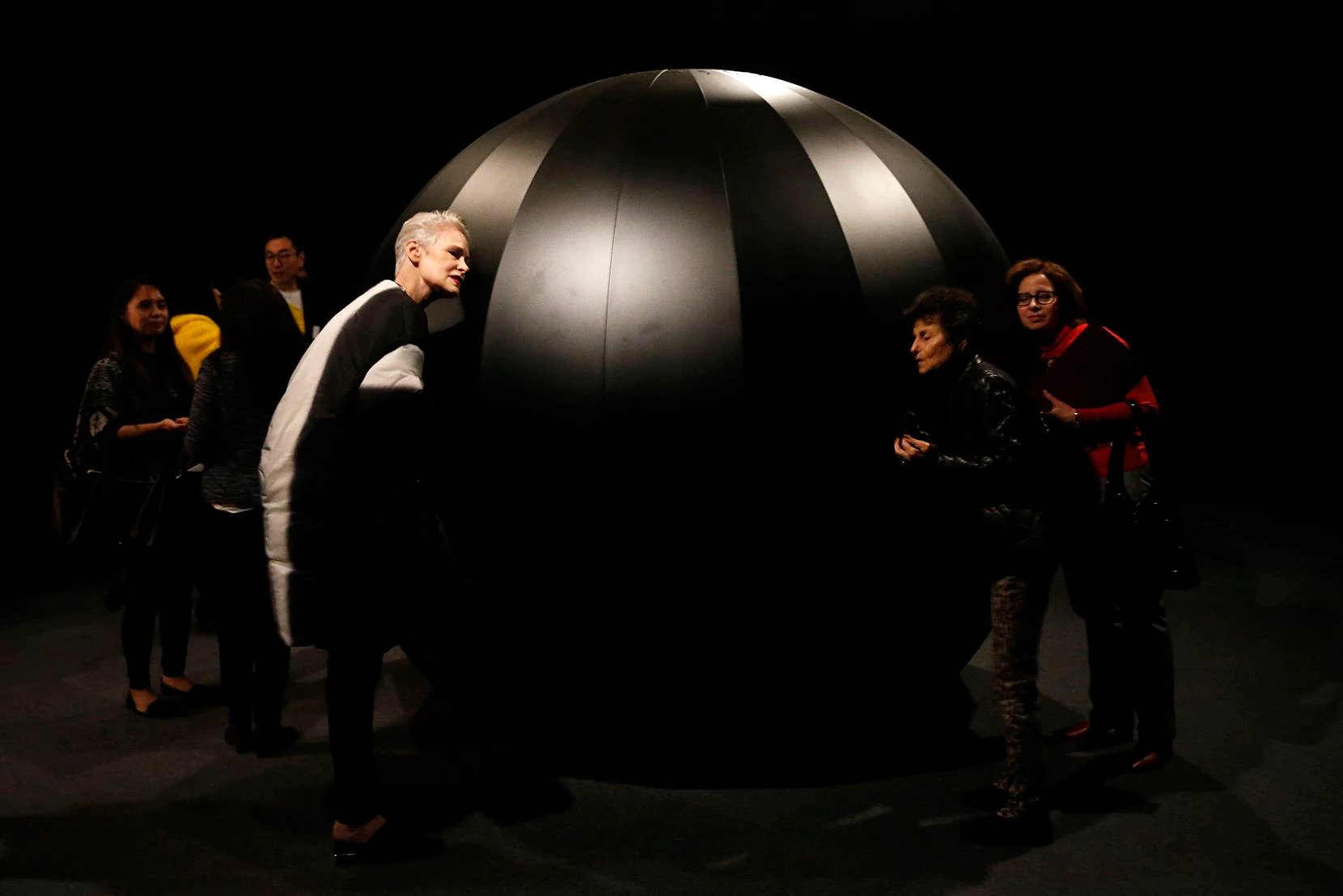
© Yuri Suzuki, Sound of the Earth Chapter 2
People
Yuri Suzuki was one of the first people who agreed to speak to our mag, but, unfortunately, we couldn’t speak properly. My interview with the sound designer didn’t proceed because of… well, because of sound problems. When I sent him written questions, it didn’t go well either. It looked like we didn’t get on well, didn’t share the same energy.
At that moment I thought that probably Yuri Suzuki doesn’t feel too well with people on the whole, but then I thought for a minute and realized what a big role people have in his projects. Not only design projects, but more artistic ones too.
They integrate themselves in it by interacting with it physically and online, they consume his art as the audience, and they are often interconnected with the main idea. The idea behind Global Sequencer is ‘to bring us together by creating an interactive experience with sounds shared from all over the world’. The idea behind the Sonic Playground is to provoke interaction between strangers. The idea behind the Sound of Earth is to remind us that everyone can find common ground and a connection when we listen to each other.
‘I think sound is quite a powerful tool for communicating and also affects people’s behavior’, — he told us.
I asked him whether he was sure that people understood the deep meanings of his project. I was curious because when I watched a video from the Sonic Bloom site I saw people who spent some time there, entertained themselves a little bit and moved on, not actually connecting with anyone. Or, for example, the Sound of Earth and people uploading sounds but actually not knowing each other, not able to get to know each other.
Suzuki said that he was sure that people understood the idea behind his projects. Later he explained who taught him about the importance of human relationships in the design context.
Home
There are many small towns and villages where you can have a great time after leaving London. And if you take the A2 road and go East for about 1,5 hour — less than 80 miles, you reach Margate, a small sea town famous for its sandy beaches and the amusement park.
This is where Suzuki spends, as he told us, most of the time doing most work in the basement of his studio space and that was the place he mentioned when we asked him about home.
He didn’t catch the more abstract part of the question about the deep meaning of the concept for him, unlike Julijonas Urbonas, who was building up one idea onto another unfolding it. I dare to assume that for Suzuki home is where the work is.
If we carefully look at his biography, we can see that he’s changed countries many times, but each time the sound paved his way. He went to Berlin to become a DJ, then moved to London to study, and then work let him travel to different places — from Stockholm to California. After that, London and Margate sort of became places to settle, but we can imagine that Suzuki will easily move somewhere else if the project interests him. By the way, he told us that he had never had a project he couldn’t finish.
It’s outstandingly fun and interesting to see this difference between Urbonas’ and Suzuki’s approaches. The former talks about catapulting people into outer space to form a planet consisting of human bodies as a monument to humanity, whereas the latter tries to unite people from different parts of the world by means of sound. It feels like, for Suzuki, the whole planet could actually be home in so many ways.
Influences

© Yuri Suzuki, Breakfast Machine
Suzuki likes to talk about people who influenced him, mentored him, taught him, helped him on his way. There are plenty of them. “For example, when I started my career, I worked with Maywa Denki, the Japanese group of artists. They taught me how to make things, how to create things”, he said. Maywa Denki is famous for what its president, Nobumichi Tosa, calls ’nonsense machines’, defining nonsense as not something meaningless but something beyond common sense.
“When I studied at the Royal College of Art, I studied from the interaction designer and also product designer Durrell Bishop. He taught me about interaction between people and objects. That hugely influenced my practice”, continued Suzuki. Bishop works on physical interfaces, product design and interactive media, and about thirty years ago he came up with the idea of an answering machine spitting out marbles.
“After graduation I worked for a company called Teenage Engineering. Its founder, Jesper Kouthoofd, showed me the liberty of creativity, the beauty of making things, but also the business aspects, how to make business with creativity”, added Suzuki. Teenage Engineering is famous for their synthesizers, and also for the designs of their synthesizers, which sometimes look like a frantic blend of tetris, Lego, and motherboard.
“And when I joined Pentagram in 2018, my mentor was Daniel Weil. He is an influential designer, but something I learned from him is about human beings and human relationship and that's really not only about creativity, not only about business, it’s also human side”, he explained. Weil designed many things, from clocks and pop-up shops to airline cabinets and a chess championship brand.
Future
“The importance of sound is increasing, because the usage is increasing. Because, instead of a text base or physical computing, people shift into more ambient computing”, Suzuki told us about the future of sound. “And the key element for ambient computing is always sound, so I feel like sound would be very important”.
It will be interesting to watch the evolution of Suzuki’s work in the future. I was and still am astonished by his ability to connect the most simple ideas, which have something childish in them like, how I can touch you with a sound or let's make some nonsense musical instrument like Maywa Denki with the most proficient technology. Sound design is always about software and hardware, but in Suzuki’s case there is always much more.
We know that for Yuri Suzuki every sound must have a reason. It could be a great idea such as turning background noise and useless voices you hear in your head and outside of it into sound design, and fill it in with meaning. We look forward to seeing if this is the path Suzuki will choose.
Edited by Sima Piterskaia
See Yuri Suzuki's website.
Selected Articles
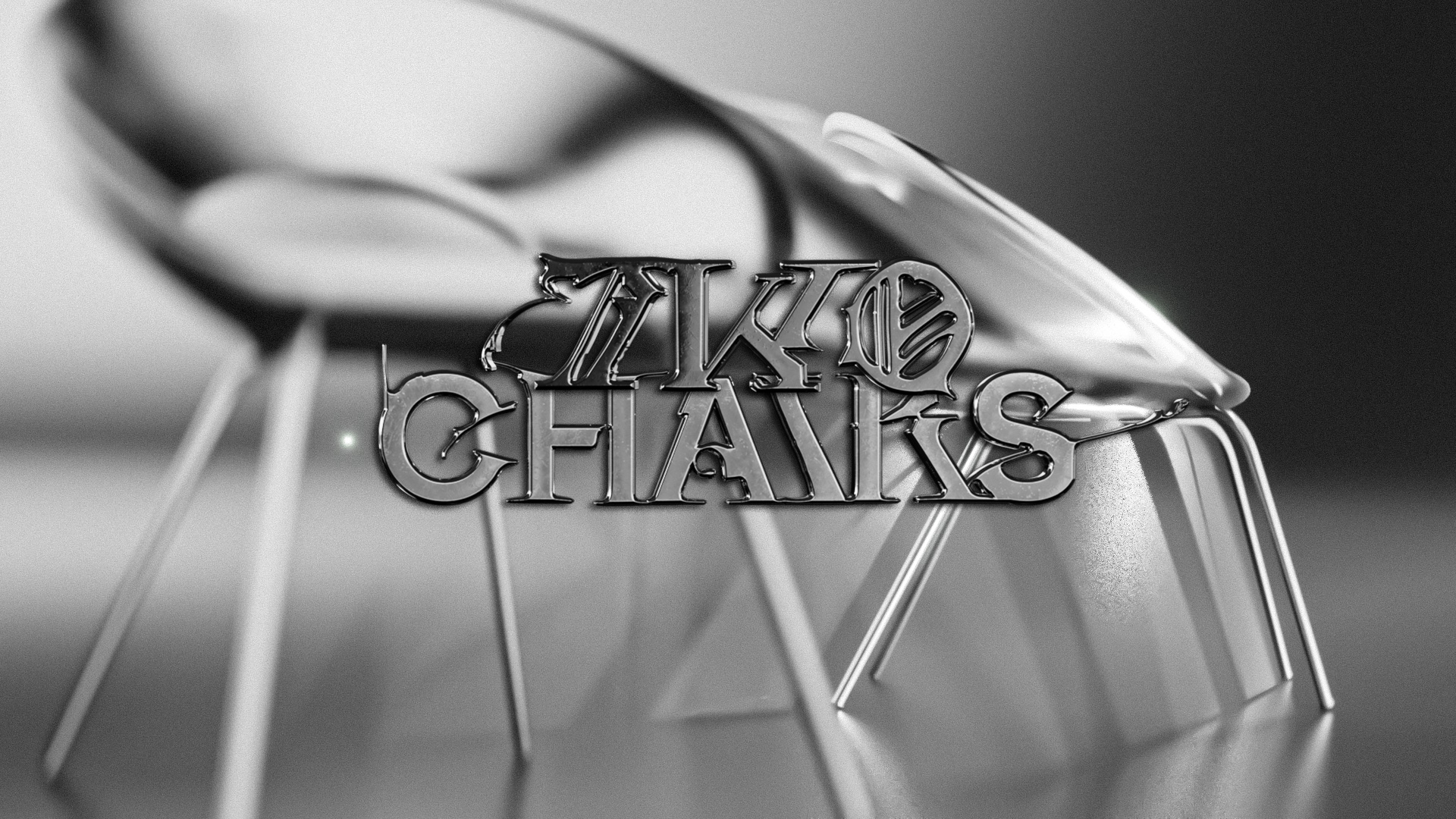
Two ChairsProject type
